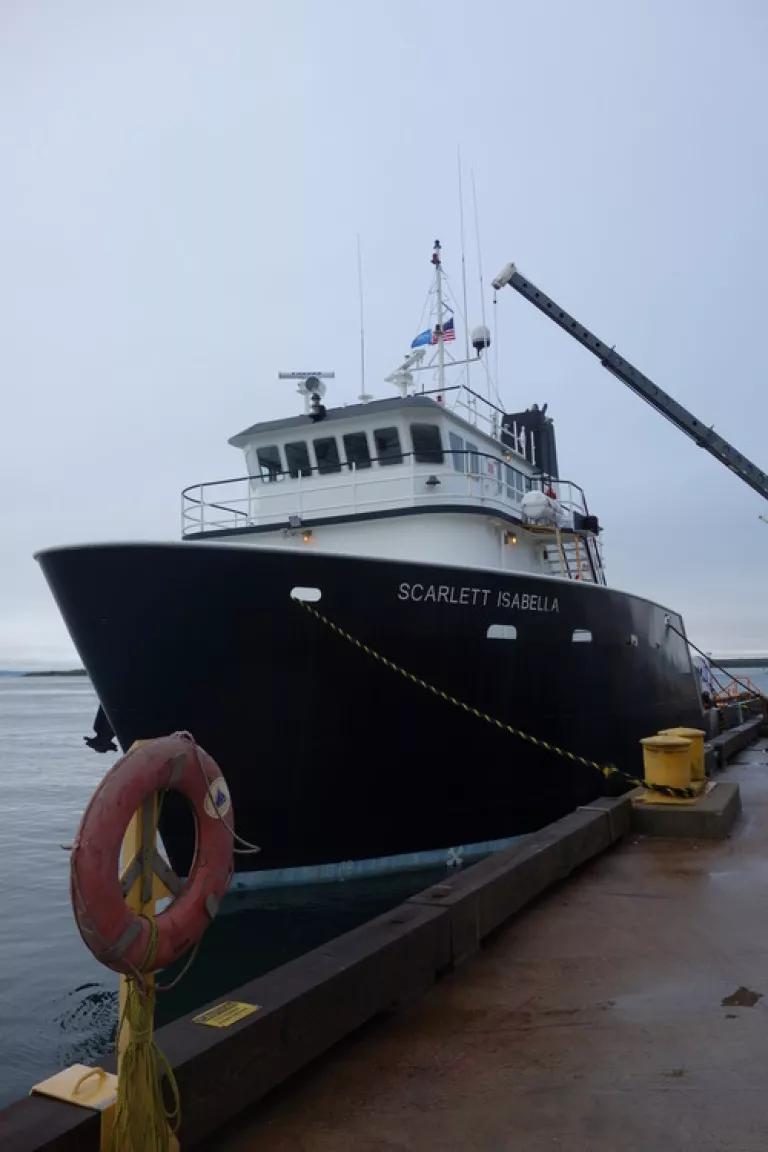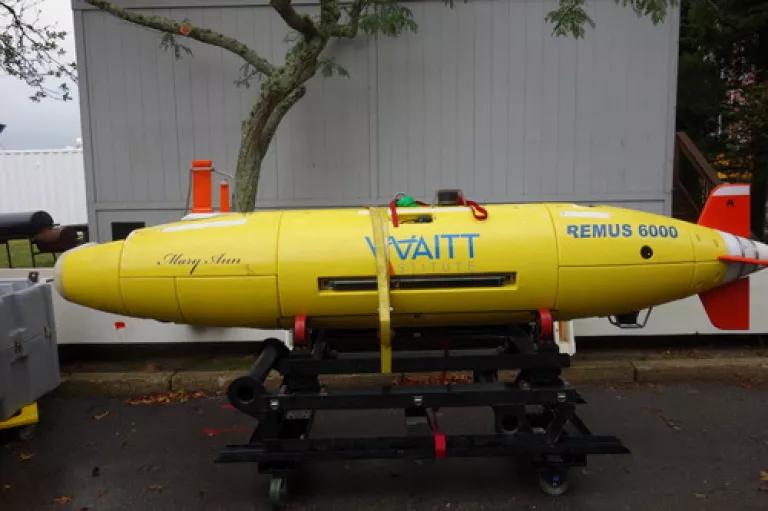
I’m about to set out on the 125-foot Scarlett Isabella (above) with team of scientists and engineers from the Waitt Institute, the University of Connecticut, the National Oceanic and Atmospheric Administration (NOAA), and the Woods Hole Oceanographic Institution (WHOI) to undertake the first ecological investigation of two Atlantic seamounts, two of just four seamounts in U.S. Atlantic waters. We will then explore several nearby “submarine” canyons that cut into the southern flank of Georges Bank southeast of Cape Cod, again cataloging for the first time the life at the bottom of these ocean features.
Seamounts and submarine canyons typically teem with all types of marine life – from vast schools of squid and mackerel to whales, tunas, and sharks – because of strong localized currents and upwellings that bring in and trap food (and sweep away wastes). The rocky walls and crevices of seamounts and canyons are frequently home to rare deep sea corals, some of which have been growing for hundreds, even thousands of years, in depths from several hundred to several thousand feet, splashes of color beyond sunlight’s reach.
This trip came about when the Waitt Institute contacted NRDC last spring to discuss the possibility of using the Waitt Institute’s state-of-the-art AUVs (autonomous underwater vehicles) to assist NRDC’s efforts to protect the sensitive resources of the Atlantic canyons and seamounts. The Waitt AUVs are submersible vehicles equipped with cameras, multi-beam and sidescan sonar, and other data collecting equipment, and the Waitt Institute had previously used them to look for deep sea corals off the South Atlantic coast. NRDC reached out to University of Connecticut’s Peter Auster, an expert on marine habitats, including specifically deep sea corals, who agreed to serve as the science lead. An expedition plan was drawn up and fleshed out, with our focus to be on the two seamounts and several canyons to the east of recent NOAA expeditions (just this week, NOAA announced they had discovered new hotspots of corals in these more western canyons). Meanwhile, Waitt worked with WHOI on the equipment engineering. A suitable vessel was secured when Boston Harbor Cruises agreed to provide the Scarlett Isabella. And now this team is setting out to explore the depths of the Atlantic.
Below is a photo of Mary Anne, one of the two Waitt AUVs, waiting to be brought on board.

Roughly 20 hours after we set out, I will be on top of Physalia seamount, the first of the two seamounts we will visit. The AUVs will come out of the steel vans on the deck in which they are serviced and housed when not in the water, and they will be lifted into the sea to start the expedition’s maiden “flight” (an AUV is said to “fly” through the water).
The Atlantic canyons and seamounts remain frontiers – of our scientific knowledge and our imagination. We know more about the surface of the moon than we do about these places. Physalia seamount – a craggy peak rising 10,000 feet up from the ocean floor – has its ecosystem, driven by complex currents around and over it. Tomorrow, scientists get their first look at it.
I’ll continue to blog over the course of the ship’s two week exploration of these deep sea worlds. I hope you’ll come along for the ride.




